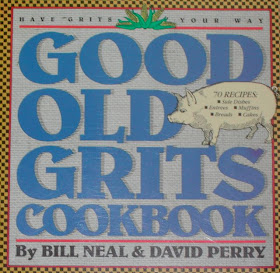
Mark F. Sohn is a culinary historian who specializes in Appalachian food and culture. Appalachian Home Cooking is part cookbook, but more importantly, it is a history of the foods and traditions that make up the unique cooking of the mountains of Appalachia. This is one of those books you want to read even if you never make a recipe. Since I moved to West Virginia, I have spent a lot of time reading about the foodways of this geographic area. Mark Sohn is a font of information.
Sausage gravy is one of the great treasures and pleasures of Appalachia cooking. In the hills it was a way to make a small amount of meat feed a houseful of folks. Like everything else that is simple and comforting, the chances to screw it up are immense! Sohn, in his recipe, cautions against producing a "gooey blob."
Now, before you turn your little "Gossip Girl" nose up at the thought of sausage gravy, ask yourself what you would do if I offered you a recipe for Saussion a Béchamel ?
White Sausage GravyFor more information on Appalachian cooking check out Mark Sohn's website: www.marksohn.com.
1/4 pound pork sausage
1/4 cup all-purpose flour
2 cups milk
1/2 teaspoon salt
1/2 teaspoon pepper
Step 1 In a large cast iron skillet over medium heat, fry the sausage, breaking it into small pieces. When the sausage is no longer pink, add the flour. Stir to moisten. The grease from the sausage must absorb all the flour. Add oil if the flour remains dry.
Step 2 Whisk in the milk, salt and pepper. When the milk boils, reduce the heat and simmer I minute or until the mixture is as thick as pancake batter.
Step 3 If the gravy is not thick, continue to cook over low heat 5 to 15 minutes, stirring every tow minutes. Remove from the heat and reheat before serving. If the gravy gets too thick – you do not want a gooey blob – add mild, water, or heavy cream.
All right, now for the "lighter side" of sausage gravy. Bob Evans, sausage king and family food marvel can't bear to think of you doing without his sausage gravy. But what to do if there is no time in you busy schedule? What do you if there is no Bob Evans Restaurant close by? How will you find sausage gravy? The folks at Bob Evans wouldn't let you down.

Yes indeed, they have invented a sausage gravy dispenser. While you tend to find them only at the very finest roadside establishments, I'm keeping my fingers crossed that by Christmas, the home model will be available.




















































